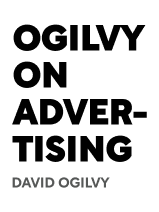

This article is an excerpt from the Shortform book guide to "Ogilvy On Advertising" by David Ogilvy. Shortform has the world's best summaries and analyses of books you should be reading.
Like this article? Sign up for a free trial here .
What does testing media mean? How can testing media help you get the best results for your advertisements?
Testing media is the process of figuring out the most effective media outlets for your ads. Depending on your ad, you might have better results with print ads or TV ads.
Read more about testing media and how it helps you create great ads.
Testing Media
Direct-response ads can also help you figure out the most effective media outlets in which to place your ads. For example, if you get low response from your ads in one publication, you might stop advertising there and put the money towards advertising in a different publication.
When considering media:
- Look at where your competitors place their ads. Likely, they get good responses from the outlets they use on a regular basis.
- Be aware of editorial changes in magazines. This may change audience and readership.
- Note that people buy less when TV programming is good because their minds aren’t free to wander—they’re focused on the show, not the commercials.
- On TV, advertise in January, February, and March, and on weekends, late evenings, and early mornings, because these are usually effective time slots.
- Remember that it’s normal for response rates to drop when you advertise regularly in the same media. Experiment to find out which publications can run your ads for longer before the response stops, and use these long-lived publications more often.
Direct-Reponse Mail Advertising
At the time of writing, direct mail was responsible for a hundred-billion dollars of sales a year. Its main users were record and book clubs, food and department stores, catalog houses, and magazines. Direct mail was becoming easier due to computers, which allowed advertisers to more easily create targeted mailing lists by filtering by demographic, purchasing history, and so on. However, in spite of its effectiveness, direct mail was unpopular and regarded as low-brow. (This may be due to the fact that direct mail is the easiest entry point for scammers, but for the most part, scammers are few and far between)
To create good mail-order copy, follow the guidelines for creating good print ads in Chapter 4.
Direct-Response TV Advertising
To create good direct-response TV advertising, such as infomercials, follow the guidelines for creating good TV ads in Chapter 6 and additionally:
- Use a demonstration that promises more than one benefit.
- Include the price.
- Include a money-back guarantee.
- Ask for the sale.
- Last longer than two minutes. People find fewer, longer commercials less annoying than lots of shorter commercials.
- Budget at least 20 seconds explaining how to order. Give the phone number at least twice and include the address. Additionally, use supers.
Measure and test the effectiveness of your commercials by the number of orders you receive after the commercial plays, rather than the number of viewers reached. (It doesn’t matter how many people you reach if none of them buys anything.)

———End of Preview———
Like what you just read? Read the rest of the world's best book summary and analysis of David Ogilvy's "Ogilvy On Advertising" at Shortform .
Here's what you'll find in our full Ogilvy On Advertising summary :
- What the "father of advertising" has learned from his decades' of experience
- How to craft easy-to-understand ads that work
- The 6 pioneers of the advertising industry






